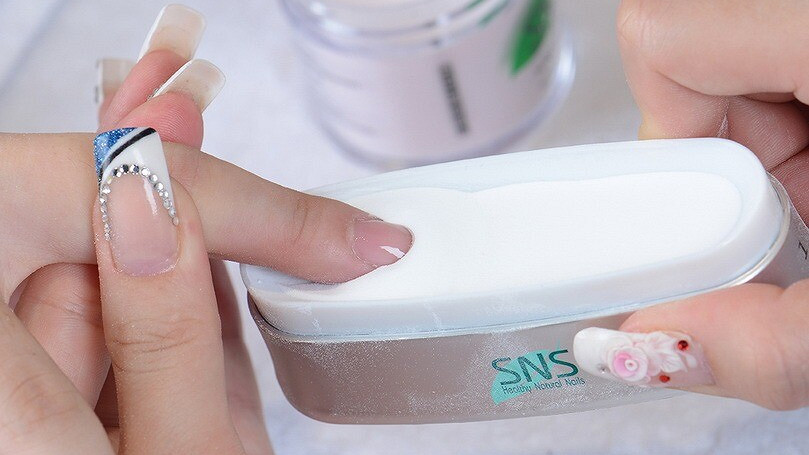
Acrylic varnish: beautiful well-groomed nails without harm to health.
Composition of acrylic varnish, advantages and disadvantages, application recommendations
It is the unique formula of acrylic varnishes that distinguishes them from traditional ones ethyl-based varnishes.
Acrylic varnishes appeared on the cosmetic market about 15 years ago and immediately gained enormous popularity.
After all, acrylic varnishes can be used by pregnant and lactating women and even children.
Composition of acrylic varnish
Acrylic varnishes have the safest possible composition.
The content of harmful substances, formaldehydes and toluenes, as well as dangerous plasticizers such as dibutyl phthalate and camphor, which make the varnish film elastic and durable, is minimized or completely absent.
The basis of acrylic varnishes — water and acrylic emulsion, highly soluble in water. Sometimes acrylic emulsion is replaced with acrylic powder, which gives the nails shine and has a brighter palette.
Don't miss
- Don't miss Be your own master: how to strengthen your nails with acrylic powder
Pros and cons of acrylic varnish
The main advantages of acrylic varnish include:
- The formula is safe for the body. Acrylic varnishes do not contain formaldehyde or dangerous plasticizers;
- Strengthening formula. In addition to the fact that acrylic varnishes contain no harmful substances, these varnishes are also saturated with various additives that help strengthen nails. Thus, some acrylic varnishes contain nylon fibers, which form a thin mesh on the nail plate, thereby strengthening the nail;
- Various colors. Most acrylic varnish is transparent. Thus, it is ideal as a base coat before applying a color coat. But there are also multi-colored acrylic varnishes, matte or with a glossy sheen, which can be used as an independent product for coloring nails;
- Protective function. Acrylic varnish covers the nail plate with a thin but durable film, which not only protects the nails from the negative effects of the environment, household chemicals, mechanical damage and frequent contact with water, but also allows the nail to breathe. Thanks to the chemical composition of acrylic varnish, the nail plate is strengthened, nails peel and break less, the surface of the nails is leveled and becomes smoother;
- Simplicity and ease of application/removal. Acrylic varnish is easy to apply and does not require drying in a UV lamp. It is also easy to remove from nails using regular acetone-based nail polish remover;
- Multifunctional. Acrylic varnish can be used as a base, main coating, fixer, and can also be used to create various designs on nails.
Among the disadvantages of acrylic varnishes — their fragility. If we compare, for example, acrylic varnishes with gel varnishes, which last on nails for up to 2-3 weeks, then the comparison will not be in favor of acrylic ones. Acrylic varnish will begin to chip within 5-6 days.
The procedure for painting nails with acrylic varnish
Painting nails with acrylic varnish occurs in several stages:
- First, using special means, it is necessary to degrease, clean and align the nail plate;
- Next, you need to apply a thin layer of transparent coating from the center of the nail plate to the edges. Before applying the next layer of varnish, you must allow the coating to dry thoroughly;
- At the last stage, you can apply a colored coating if necessary.
Don't miss
- Don't miss The dangers of gel nail polish: scientific research and 8 ways to make the procedure safe
Recommendations for painting nails with acrylic varnish
Below are some recommendations for using acrylic varnishes :
- When choosing acrylic varnish, it is better to give preference to varnishes containing nylon particles;
- You should not save on buying varnish, since cheap acrylic varnish can easily turn out to be a fake that is dangerous to health ;
- Since acrylic varnish takes quite a long time to dry, you should not get your hands wet in the first few hours after painting, and it is also better to refrain from doing housework so as not to accidentally wash off the varnish with water.
ul>

